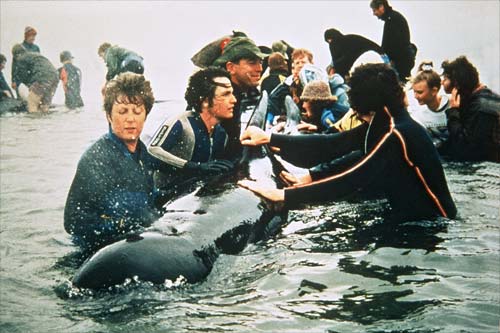
Volunteers help stranded whales at Pūponga, Farewell Spit, at the South Island’s north-west tip. In just a few generations New Zealanders evolved from whale killers to whale savers. The growing marine conservation movement was most visible in campaigns such as Save the Whale in the 1970s and 1980s, and the quest to ban wall-of-death (drift-net) fishing in the early 1990s. By the 2000s there was a strong lobby for the conservation of all creatures in some areas of the ocean.
Te whakamahi i tēnei tūemi
Department of Conservation
Reference:
10042603
This item has been provided for private study purposes (such as school projects, family and local history research) and any published reproduction (print or electronic) may infringe copyright law. It is the responsibility of the user of any material to obtain clearance from the copyright holder.





Tāpiritia te tākupu hou